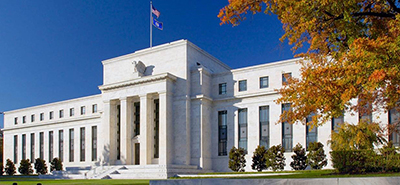
Fed Raises Funds Rate 25 Basis Points

The Federal Open Market Committee telegraphed its intentions weeks ago; on Wednesday, to no one’s surprise, it raised the federal funds rate by 25 basis points.
The FOMC action at the end of its regularly scheduled two-day policy meeting brought the federal funds rate to 4-1/2 to 4-3/4 percent, its highest rate since 2009. It marked the eighth consecutive meeting in which the FOMC raised the federal funds rate; however, the 25 basis-point increase Wednesday was the smallest rate hike since March 2022, following four 75-basis point and one 50-basis point hike since last June.
“The Committee anticipates that ongoing increases in the target range will be appropriate in order to attain a stance of monetary policy that is sufficiently restrictive to return inflation to 2 percent over time,” the FOMC said in its statement.
“While the FOMC statement noted that inflation has ‘eased somewhat,’ the unanimous vote of monetary policymakers to raise rates another 25 basis points – and signal that further increases are likely – indicates that markets should anticipate that the Federal Reserve will keep short-term rates higher for longer,” said Mike Fratantoni, Chief Economist with the Mortgage Bankers Association. “This means rates will probably peak at about 5% in March, in the Fed’s efforts to force inflation down through a marked slowdown of the economy.”
Fratantoni noted signs of slowing wage growth and other hints of a weakening job market. “We expect that a slowdown in economic activity will ultimately result in the unemployment rate increasing significantly over the course of 2023,” he said.
Fratantoni also noted while the Federal Reserve controls short-term rates, long-term rates, including 30-year mortgage rates are a function of market expectations for the path of the economy. “And investors are betting that the economic slowdown and the Fed’s eventual victory over inflation will result in lower rates over time,” he said. “MBA is still forecasting a modest drop in mortgage rates through 2023, ending closer to 5% rather than the 6% we have today.”
“The Fed is paying close attention to wage growth and labor market tightness, particularly in the service sector, for signs of a reacceleration of inflation,” said Odeta Kushi, Deputy Chief Economist with First American Financial Corp., Santa Ana, Calif. “While wage growth is slowing and job openings are declining, both are still high, suggesting that labor demand continues to outstrip supply. This means that services providers are still struggling to find labor, their primary input, keeping the unemployment rate near historic lows and the pressure on wages high.”
Kushi said should evidence over the coming months suggests inflation is on a consistent downward trend, “mortgage rates may continue to decline and activity in the housing market will pick up—just in time for spring home-buying season. If high inflation proves more stubborn, especially in the service sector, the Fed may respond by further tightening the screws on monetary policy, putting upward pressure on mortgage rates.”
“A hike in short-term rates, though important, is only indirectly impactful for mortgage rates. Mortgages are mostly priced off of long-term rates, so the shape of the yield curve also matters,” said Shampa Bhattacharya, Director with Fitch Ratings, New York. “The latest lower rate hike suggests a slowdown in the Fed’s momentum, which could be an incremental positive for mortgage markets as the long-term rates will continue to drop. 30-year mortgage rates peaked in November 2022 at over 7% and since then have trended down to 6.13%, following the moves in the longer end of the yield curve from over 4% in October and November to 3.5% currently.”
The full FOMC statement appears below:
“Recent indicators point to modest growth in spending and production. Job gains have been robust in recent months, and the unemployment rate has remained low. Inflation has eased somewhat but remains elevated.
“Russia’s war against Ukraine is causing tremendous human and economic hardship and is contributing to elevated global uncertainty. The Committee is highly attentive to inflation risks.
“The Committee seeks to achieve maximum employment and inflation at the rate of 2 percent over the longer run. In support of these goals, the Committee decided to raise the target range for the federal funds rate to 4-1/2 to 4-3/4 percent. The Committee anticipates that ongoing increases in the target range will be appropriate in order to attain a stance of monetary policy that is sufficiently restrictive to return inflation to 2 percent over time. In determining the extent of future increases in the target range, the Committee will take into account the cumulative tightening of monetary policy, the lags with which monetary policy affects economic activity and inflation, and economic and financial developments. In addition, the Committee will continue reducing its holdings of Treasury securities and agency debt and agency mortgage-backed securities, as described in its previously announced plans. The Committee is strongly committed to returning inflation to its 2 percent objective.
“In assessing the appropriate stance of monetary policy, the Committee will continue to monitor the implications of incoming information for the economic outlook. The Committee would be prepared to adjust the stance of monetary policy as appropriate if risks emerge that could impede the attainment of the Committee’s goals. The Committee’s assessments will take into account a wide range of information, including readings on labor market conditions, inflation pressures and inflation expectations, and financial and international developments.
“Voting for the monetary policy action were Jerome H. Powell, Chair; John C. Williams, Vice Chair; Michael S. Barr; Michelle W. Bowman; Lael Brainard; Lisa D. Cook; Austan D. Goolsbee; Patrick Harker; Philip N. Jefferson; Neel Kashkari; Lorie K. Logan; and Christopher J. Waller.”
